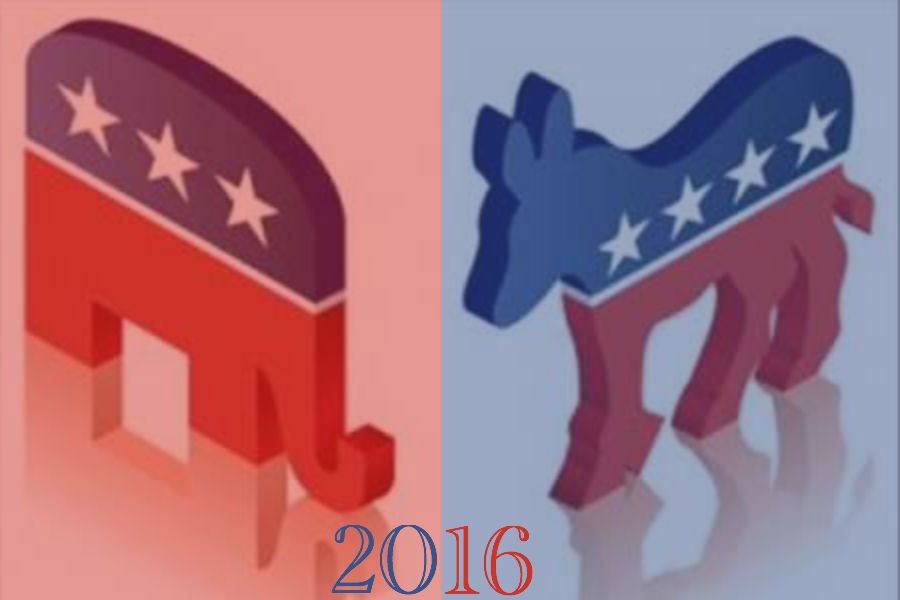Politicorner: A breakdown of the 2016 primaries
July 12, 2016
Note: all election results information in this articles comes from the New York Times and CNN.
The 2016 election has been quite a turbulent one, and we still have a ways to go before we even reach the conventions, where the nominees from each party are selected. Here’s a quick breakdown of how the primary race went down:
Long before the Iowa caucus, many people announced their run for president. In total, there were 23 candidates–17 Republicans and 6 Democrats (please don’t ask me to name them all). In many rounds of debates, they all discussed their policies and how they would carry them out were they elected president.
By the Iowa caucus, 15 candidates remained: 12 Republicans and 3 Democrats. Many candidates did poorly in the polls the day of the caucus and decided to drop out. Republican Ted Cruz and Democrat Hillary Clinton won the caucus.
The New Hampshire primary yielded different results, with 11 candidates left. Republican Donald Trump and Democrat Bernie Sanders defeated their opponents in the First in the Nation Primary by astounding margins.
Next came the South Carolina Primary and the Nevada Caucus, both of which were won by Trump and Clinton. After South Carolina, Republican Jeb Bush ended his campaign, leaving only five Republicans in the running.
This left seven candidates total for the massively important night: Super Tuesday. On March 1, 11 states voted: Arkansas, Alabama, Georgia, Massachusetts, Minnesota, Oklahoma, Tennessee, Texas, Vermont, and Virginia for both parties, with Alaska voting on the Republican side, and Colorado on Democratic. Trump and Clinton won seven states each, taking their parties’ majorities. Bernie Sanders won four states on the Democratic side, Ted Cruz won three states, Republican Marco Rubio won one state, and Republican Ben Carson suspended his campaign shortly after Super Tuesday.
At this point, only six candidates remained. On the Democratic side was US Senator Bernie Sanders of Vermont, and former US Secretary of State Hillary Clinton. On the Republican side was Ohio governor John Kasich, US Senators Ted Cruz and Marco Rubio from Texas and Florida respectively, and business mogul Donald Trump.
States continued to vote in March, going mainly to Sanders, Cruz, Trump, and Clinton. Kasich and Rubio were lagging in delegates and were struggling to gain any momentum. The only contests Rubio had won since Super Tuesday were Washington D.C and Puerto Rico. Kasich hadn’t won any. Eventually, the two Republicans were putting all their hopes in their home states which voted on March 15. Kasich won Ohio, but Rubio lost Florida to Trump, prompting him to drop from the race.
And then there were five. For the Democrats, Clinton had a wide lead over Sanders, both in pledged delegates and superdelegates (delegates who are free to choose who they support regardless of how the state votes). A Democratic candidate needs 2,383 delegates to secure the nomination, and it seemed Clinton was going to win without a challenge. Sanders didn’t go down without a fight, though. He won seven out of eight states and territories from March 22 to April 9, increasing the momentum of his campaign.
But New York would be a real decider for both Democrats and Republicans. With Trump and Clinton nearing their parties’ nominations, their opponents were scrambling to stop them, but New York, the third most populous state in the country, would say a lot for the rest of the election season. On April 19, frontrunners Trump and Clinton won by wide margins.
The election was pretty much decided from there. Trump won every contest after that, causing both Cruz and Kasich to eventually drop out. Sanders didn’t suspend his campaign, but only won six of the nineteen following contests. Both Trump and Clinton clinched their nominations before the final set of states voted.
By now, each party’s nominee has pretty much decided: Donald J. Trump for the Republicans, and Hillary Clinton for the Democrats. The presumptive nominees will be confirmed at their respective conventions in July, which will mark the end of the primary race and begin the general election between Democrats and Republicans.
For all state primary results, visit: http://www.cnn.com/election














